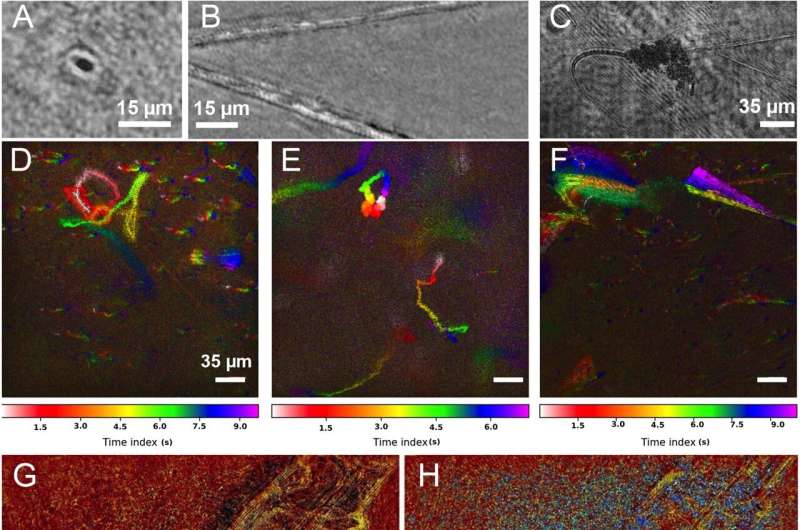New research from Portland State University focused on identifying signs of life—biosignatures—in extreme environments here on Earth. Researchers investigated whether microbial active motion (e.g., swimming), morphology, and optical properties could serve as biosignatures using in situ video microscopy at a range of extreme field sites, many of which had not been previously explored with this technique.
The study is published in the journal PLOS ONE.
“These environments are considered strong analogs for extraterrestrial settings, such as those found on other planets and moons in our solar system,” said Carl Snyder, lead author and Ph.D. candidate in physics at Portland State.
The researchers found that at least one of the three biosignatures (motion, morphology, or optical properties) was present in every environmental sample tested, ranging from hot deserts to Arctic ice and alkaline springs.
This supports the idea that even in extreme environments, some fraction of microbes exhibit detectable life-indicating characteristics.
This research also highlights digital holographic microscopy (DHM) as a promising tool for future space missions analyzing liquid samples in search of life. It also emphasizes the ubiquity of microbial swimming as a potential biosignature.

To explore this further, researchers introduced chemical and thermal stimuli to test their effects on microbial motility. The responses varied—some environments showed strong microbial reactions, while others showed little to none.
Despite these differences, a consistent finding across all sites was the presence of microbial biosignatures wherever was explored with DHM.
More information:
Carl D. Snyder et al, Extant life detection using label-free video microscopy in analog aquatic environments, PLOS ONE (2025). DOI: 10.1371/journal.pone.0318239
Citation:
Microscopy reveals signs of life in Earth’s extremes, boosting search for alien life (2025, April 4)
retrieved 4 April 2025
from https://phys.org/news/2025-04-microscopy-reveals-life-earth-extremes.html
This document is subject to copyright. Apart from any fair dealing for the purpose of private study or research, no
part may be reproduced without the written permission. The content is provided for information purposes only.

